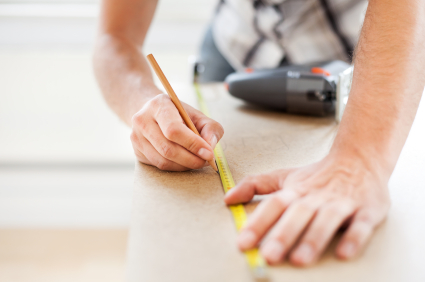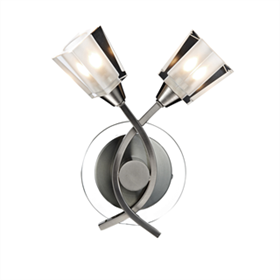
Many of us would cite ÔÇÿsaving moneyÔÇÖ as a reason for tackling DIY jobs ourselves, yet home improvement projects can be anything but cheap!
Research from the Nationwide Building Society* shows that Brits plan to spend an average of ┬ú3,342 on DIY projects over the coming year ÔÇô totalling ┬ú79bn as a nation! Whilst two thirds of those surveyed are planning to take on less expensive tasks such as painting or wallpapering, 16% are going to update or completely renew their kitchen and 18% are going to overhaul their bathroom. And with nearly one in 10 planning to spend more than ┬ú5,000, the question is: how to finance these grand designs?
Here we outline some of the funding options available to homeowners planning a DIY project:
Loans
Loans are a good way of spreading the cost of your home improvement over a number of years in manageable monthly instalments. Shop around to compare interest rates; a number of good deals around at the moment mean many customers should be able to get an interest rate of about 5%. DonÔÇÖt forget to consider supermarket, as well as bank, loans, and remember that your home could be at risk if you donÔÇÖt keep up the payments.
Credit cards
 For people who are good at managing their money, a 0% credit card can be an excellent way of financing a building or DIY project. As the name suggests, these cards offer interest-free credit for a specified length of time and, with a recent credit card ÔÇÿwarÔÇÖ breaking out between lenders, itÔÇÖs a great time to take advantage of 24 and even 32-month 0% deals. But remember that the trick here is to switch to another 0% free card when your deal comes to an end or you could find yourself on an unfavourable rate without realising the costs.
For people who are good at managing their money, a 0% credit card can be an excellent way of financing a building or DIY project. As the name suggests, these cards offer interest-free credit for a specified length of time and, with a recent credit card ÔÇÿwarÔÇÖ breaking out between lenders, itÔÇÖs a great time to take advantage of 24 and even 32-month 0% deals. But remember that the trick here is to switch to another 0% free card when your deal comes to an end or you could find yourself on an unfavourable rate without realising the costs.
Grants
In some circumstances, such as if youÔÇÖre disabled and need to improve or adapt your home, you can get a grant to help with the cost. Your local authority should offer grants or loans to people who meet certain criteria, as well as sometimes providing tools and equipment or recommending builders who can carry out the work. Citizens Advice has detailed information on the type of help you could access.
If your improvements include energy efficiency measures, grants towards things like cavity wall and loft insulation or the cost of a new boiler are available. Again, Citizens Advice is a good place to start if you want to find out more about the Energy Companies Obligation or the Nest scheme for homeowners and tenants in Wales, and you can also call the Energy Saving Advice Service on 0300 123 1234 for up-to-date information. 
Remortgaging
Homeowners with a good credit rating and a reliable income can usually release equity from their home to pay for refurbishments or building extensions. But spreading the debt over a longer period ÔÇô such as the length of your mortgage ÔÇô might see you paying more interest than you realise. In addition, remortgaging is becoming more difficult as lenders tighten the rules to focus on affordability, so you might find your mortgage lender wonÔÇÖt be rushing to increase your loan as they might have a few years ago.
However you choose to finance your home improvement plans, donÔÇÖt forget to budget carefully and put aside a small contingency pot to cover unexpected expenses. And if youÔÇÖre calling in professionals to help with any part of the job, get a number of quotes first and ask for references or recommendations.
* YouGov survey of 2,128 adults carried out in February 2014 for Nationwide


 AutumnÔÇÖs here again, signalling a switch from outdoor maintenance and gardening to indoor decorating. But before you tackle DIY jobs big or small, read our guide to the decorating mistakes you really should avoid if you want your home to stand out for all the right reasons!
AutumnÔÇÖs here again, signalling a switch from outdoor maintenance and gardening to indoor decorating. But before you tackle DIY jobs big or small, read our guide to the decorating mistakes you really should avoid if you want your home to stand out for all the right reasons! DONÔÇÖT ÔÇÿswitch offÔÇÖ interest after the painting and papering is done! Even the most expertly decorated room will be let down by poor lighting, so make sure this is included in your plans and your budget. The effort put into decorating a large room stylishly wonÔÇÖt be reflected with one measly central bulb, so think about installing a line of
DONÔÇÖT ÔÇÿswitch offÔÇÖ interest after the painting and papering is done! Even the most expertly decorated room will be let down by poor lighting, so make sure this is included in your plans and your budget. The effort put into decorating a large room stylishly wonÔÇÖt be reflected with one measly central bulb, so think about installing a line of  What kind of DIY enthusiast are you? Do you do it yourself because you love fixing, painting and building things? Or is your enthusiasm more about the pounds youÔÇÖre saving by foregoing a professional job?
What kind of DIY enthusiast are you? Do you do it yourself because you love fixing, painting and building things? Or is your enthusiasm more about the pounds youÔÇÖre saving by foregoing a professional job?